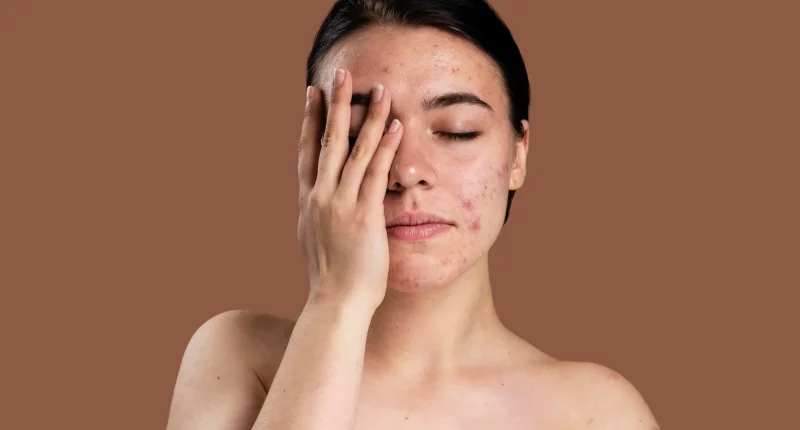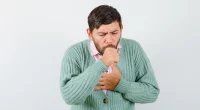Chloracne is a serious form of acne that is especially linked with exposure to chlorinated hydrocarbons, like dioxins and polychlorinated biphenyls. First identified in the 1970s, chloracne became widely recognized as a marker of environmental pollution, particularly following chemical spills and industrial accidents. The term “chloracne” reflects its association with chlorinated chemicals and is characterized by deep, painful lesions and cysts, typically on the face and upper body. Its presence indicates a significant toxic exposure, often linked to long-term health risks and environmental contamination.
Causes
Chloracne is mainly caused by exposure to chlorinated hydrocarbons, particularly polychlorinated biphenyls and dioxins. These toxic compounds can be released into the environment by industrial processes, waste disposal, or accidental spills. When people come into contact with these chemicals, either through inhalation, ingestion, or skin contact, the toxins can build up in the body. Over time, they disrupt normal skin cell function and contribute to the development of chloracne. This condition is often seen in areas with high levels of environmental pollution or in people with occupational exposure to these dangerous substances.
In addition to environmental exposure, genetic factors may also play a role in the development of chloracne. Some people may be genetically predisposed to have a more serious reaction to these toxins, leading to a heightened chance of developing the condition. This genetic susceptibility, combined with significant exposure to chlorinated hydrocarbons, can exacerbate the seriousness of chloracne and contribute to its persistence. Overall, chloracne serves as a clear indicator of significant chemical exposure and environmental contamination, underscoring the need for effective measures to handle and decrease toxic exposure.
Symptoms
Chloracne manifests with a range of distinct symptoms that closely resemble serious acne but are specifically linked to exposure to chlorinated hydrocarbons. The condition typically presents with various skin abnormalities that can be both disfiguring and painful. These symptoms often occur in areas with the most significant exposure to the toxins and can have a significant impact on a person’s quality of life.
- Deep, Painful Cysts: Large, inflamed cysts that can be painful and tender, often found on the face, shoulders, and back.
- Comedones: Whiteheads and Blackheads that are more numerous and severe than those seen in typical acne.
- Papules and Nodules: Raised, red, and inflamed bumps on the skin.
- Scarring: Permanent scars and pitted skin that can result from serious cases.
- Skin Darkening: Areas of hyperpigmentation in affected regions.
- Irritation and Itching: Persistent itching and discomfort in the affected areas.
These symptoms reflect the body’s response to the toxic chemicals and highlight the requirement for addressing environmental and occupational exposure to prevent and manage chloracne effectively.
Treatment
Treating chloracne involves a multi-faceted approach aimed at decreasing symptoms and addressing the underlying exposure to toxic chemicals. The main steps in managing this condition include:
- Eliminating Exposure: The most important step is to find and eliminate the source of exposure to chlorinated hydrocarbons. This may involve changing work environments, enhancing safety tips, or spreading from contaminated areas.
- Medical Treatment: Oral or topical medications can assist in managing the symptoms of chloracne. Topical retinoids, like tretinoin, can decrease inflammation and comedones. Oral antibiotics, like tetracyclines, may be suggested to control secondary bacterial infections and decrease inflammation.
- Skin Care Regimen: Adopting a gentle skincare routine is essential. Utilizing non-comedogenic cleansers and moisturizers can help avoid further irritation and manage signs. Regular exfoliation and proper hygiene can also assist in controlling the seriousness of the condition.
- Checking and Support: Regular follow-ups with a dermatologist are important to check progress and adjust treatment as necessary. Supportive care, including counseling and psychological support, may also be beneficial, particularly if the condition affects self-esteem or standard of life.
- Detoxification and Health Management: In some cases, supporting the body’s natural detoxification processes through hydration, a healthy diet, and possibly detoxification treatments can aid in decreasing toxin levels and enhancing complete skin health.
Addressing both the symptoms and the cause of chloracne is important for effective management and prevention of long-term health effects.
Diagnosis
Diagnosing chloracne involves a combination of clinical evaluation and exposure history assessment. A dermatologist typically starts with a detailed medical history to find any potential exposure to chlorinated hydrocarbons, like dioxins or PCBs, either through environmental sources or occupational hazards. The diagnosis is confirmed through a physical examination of the skin, where the characteristic appearance of deep cysts, comedones, and other acne-like lesions is noted. In some cases, a biopsy may be performed to differentiate chloracne from other kinds of acne or skin conditions. Lab tests may also be conducted to find elevated levels of toxins in the body, further supporting the diagnosis and guiding appropriate treatment and management strategies.
Prevention
Preventing chloracne primarily involves minimizing exposure to chlorinated hydrocarbons. This can be achieved by implementing stringent safety measures in environments where these chemicals are used, like industrial settings. Workers should use protective equipment, follow proper handling procedures, and undergo regular health screenings to check exposure levels. Additionally, regulations and guidelines to control and decrease environmental pollution from these substances can significantly lower the chance of chloracne in communities living near industrial sites.
Another preventive measure includes public awareness and education about the risks linked with chlorinated hydrocarbons. Communities and individuals should be informed about the sources of these toxins and the importance of avoiding contact. Proper waste disposal and remediation of contaminated sites are also important to prevent the spread of these harmful chemicals. By addressing both environmental and occupational sources of exposure, the incidence of chloracne can be effectively reduced.
When to consult a healthcare provider
Consult a healthcare provider for chloracne if you develop persistent, severe acne-like symptoms, like painful cysts, extensive comedones, or significant skin scarring, particularly if there is a known history of exposure to chlorinated hydrocarbons. Early consultation is important if these symptoms do not improve with over-the-counter treatments or if they interfere with daily activities and quality of life. Additionally, seek medical advice if you suspect exposure to toxic chemicals or if there is a need to assess the extent of toxin accumulation and its impact on your health. A dermatologist can provide a comprehensive evaluation, appropriate diagnosis, and tailored treatment plan to manage and alleviate symptoms effectively.
Summary
Chloracne is a serious acne-like condition caused by exposure to chlorinated hydrocarbons, like dioxins and PCBs. It presents with painful cysts, comedones, and scarring, primarily affecting areas with significant exposure. Treatment involves eliminating exposure, utilizing oral or topical medications, and adopting a gentle skincare routine. Diagnosis is based on a detailed history, physical examination, and sometimes biopsies or toxin tests. Prevention focuses on decreasing exposure through safety measures and environmental controls. Public education and proper waste management are also essential to mitigate risk.









